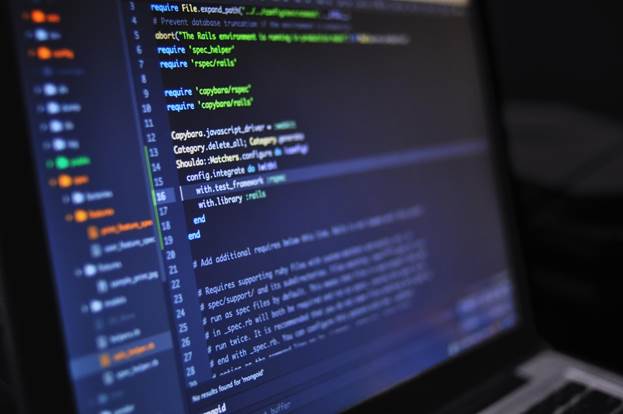Chapter 182: pyaudio
PyAudio provides Python bindings for PortAudio, the cross-platform audio I/O library. With PyAudio, you can easily use Python to play and record audio on a variety of platforms. PyAudio is inspired by:
1.pyPortAudio/fastaudio: Python bindings for PortAudio v18 API.
2.tkSnack: cross-platform sound toolkit for Tcl/Tk and Python.
Section 182.1: Callback Mode Audio I/O
“””PyAudio Example: Play a wave file (callback version).”””
import pyaudio
import wave
import time
import sys
if len(sys.argv) < 2:
print("Plays a wave file.\n\nUsage: %s filename.wav" % sys.argv[0])
sys.exit(-1)
wf = wave.open(sys.argv[1], 'rb')
instantiate PyAudio (1) p = pyaudio.PyAudio()
define callback (2)
def callback(in_data, frame_count, time_info, status):
data = wf.readframes(frame_count)
return (data, pyaudio.paContinue)
open stream using callback (3)
stream = p.open(format=p.get_format_from_width(wf.getsampwidth()),
channels=wf.getnchannels(),
rate=wf.getframerate(),
output=True,
stream_callback=callback)
start the stream (4) stream.start_stream()
wait for stream to finish (5) while stream.is_active():
time.sleep(0.1)
stop stream (6)
stream.stop_stream()
stream.close()
wf.close()
close PyAudio (7) p.terminate()
In callback mode, PyAudio will call a specified callback function (2) whenever it needs new audio data (to play)
and/or when there is new (recorded) audio data available. Note that PyAudio calls the callback function in a
separate thread. The function has the following signature callback(, ,
, ) and must return a tuple containing frame_count frames of audio data and a flag
GoalKicker.com – Python® Notes for Professionals
702
signifying whether there are more frames to play/record.
Start processing the audio stream using pyaudio.Stream.start_stream() (4), which will call the callback function repeatedly until that function returns pyaudio.paComplete.
To keep the stream active, the main thread must not terminate, e.g., by sleeping (5).
Section 182.2: Blocking Mode Audio I/O
"""PyAudio Example: Play a wave file."""
import pyaudio
import wave
import sys
CHUNK = 1024
if len(sys.argv) < 2:
print("Plays a wave file.\n\nUsage: %s filename.wav" % sys.argv[0])
sys.exit(-1)
wf = wave.open(sys.argv[1], 'rb')
instantiate PyAudio (1) p = pyaudio.PyAudio()
open stream (2)
stream = p.open(format=p.get_format_from_width(wf.getsampwidth()),
channels=wf.getnchannels(),
rate=wf.getframerate(),
output=True)
read data
data = wf.readframes(CHUNK)
play stream (3) while len(data) > 0:
stream.write(data)
data = wf.readframes(CHUNK)
stop stream (4)
stream.stop_stream()
stream.close()
close PyAudio (5) p.terminate()
To use PyAudio, first instantiate PyAudio using pyaudio.PyAudio() (1), which sets up the portaudio system.
To record or play audio, open a stream on the desired device with the desired audio parameters using pyaudio.PyAudio.open() (2). This sets up a pyaudio.Stream to play or record audio.
Play audio by writing audio data to the stream using pyaudio.Stream.write(), or read audio data from the stream using pyaudio.Stream.read(). (3)
Note that in “blocking mode”, each pyaudio.Stream.write() or pyaudio.Stream.read() blocks until all the given/requested frames have been played/recorded. Alternatively, to generate audio data on the fly or immediately process recorded audio data, use the “callback mode”(refer the example on call back mode)
GoalKicker.com – Python® Notes for Professionals 703
Use pyaudio.Stream.stop_stream() to pause playing/recording, and pyaudio.Stream.close() to terminate the stream. (4)
Finally, terminate the portaudio session using pyaudio.PyAudio.terminate() (5)

